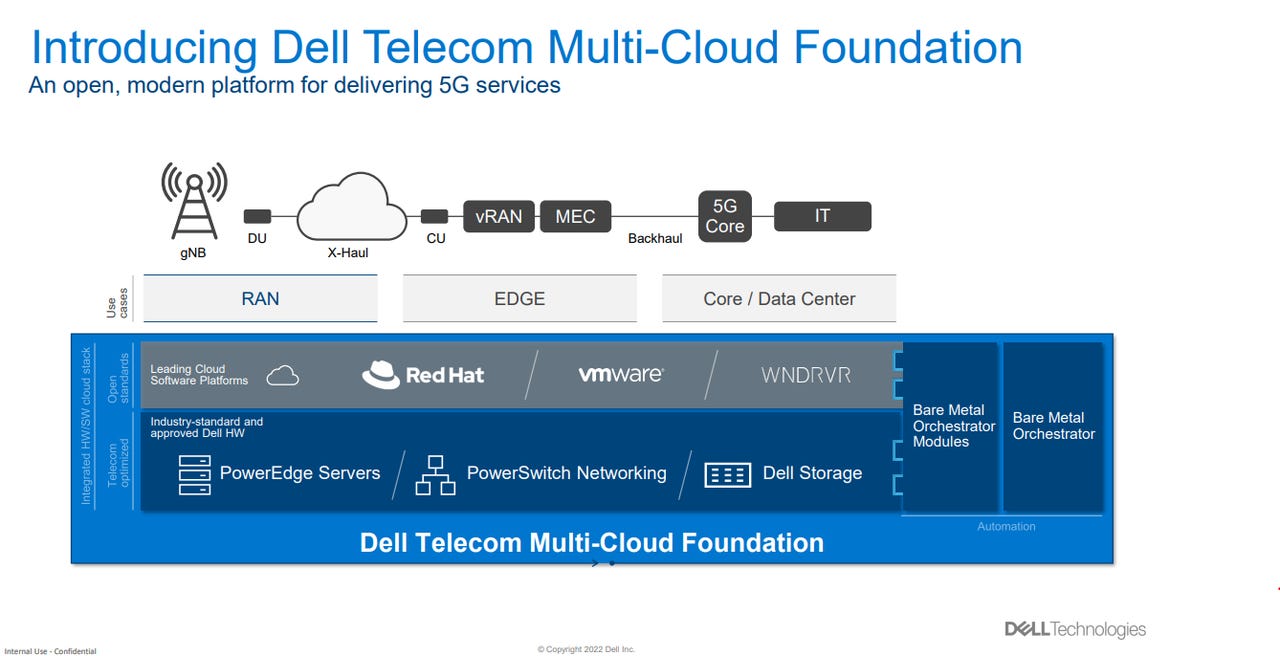Dell teams up with Marvell to bridge Open RAN performance gap


Dell Technologies and Marvell have launched a solution aimed to address current performance challenges of Open RAN deployment in virtualised distributed unit environments.
Speaking with ZDNet, Dell Technologies Asia Pacific and Japan head of telecom Sam Saba explained the Open RAN Accelerator Card has been designed to bring the performance of traditional RAN solution to Open RAN.
"[There's] this gap of performance and energy consumption. Effectively, we believe now this card will bridge that performance," he said.
"The way we're doing this is through what we call the layer 1 offload. With that, we're looking at taking all that layer 1 processing out of the standard CPU that sits in the server, which occupies 60-70% of overall processing capacity … and putting it in a PCIe card in line into the virtual distributed unit close to the base station … in doing that we're effectively relieving, or releasing, a lot of the capacity in the standard processing card to do more processing."
Saba added the card also features PTP syncing to enable various parts of a telco network to be synchronised, eliminating the need for additional modules to orchestrate the synchronisation.
Additionally, Dell has introduced its Telecom Multi-Cloud Foundation featuring Bare Metal Orchestrator modules designed to help telecommunications service providers (CSPs) integrate Dell's hardware with cloud support software platforms, including RedHat, VMWare, and Wind River.
Dell claims the Multi-Cloud Foundation is touted to help CSPs reduce operating expenses by 39% and improve total cost of ownership by 32%.
"[This is] primarily due to savings in time spent on testing and certification, manual processes, provisioning, integration, software updates, as well as planning and engineering. This where we see the primary source of reduction," Saba said.
To support Dell's plan to set up a 5G Innovation Lab at its Round Rock headquarters in Texas, Dell has developed its OTEL solution integration platform to allow partners and operators to connect their own 5G lab with Dell's.
"We give them a lot more flexibility, rather than having to invest in different configurations in their own labs; we can do that for them, as we can give them a lot more flexibility to be able to test these different variants of solutions," Saba said.
Dell has also brought a new product called ProDeploy for NFVI to help accelerate the disaggregation of virtualised telecom networks.
Further, to assist CSPs deliver enterprise services on 5G, the company has also launched the Dell Services Edge 1.2 to bring together edge compute resources with private wireless connectivity.
"What we're talking about here now is laying the groundwork for operators to be able to start to use the mobile network to deliver enterprise services," Saba said.
The tech giant first flagged its foray into the telecom space during Dell World in May, before it announced a slew of hardware and software to build out its cloud-native telecom ecosystem.
According to Saba, these latest announcements is part of the company's ongoing efforts to bolster its position in the global telecom sector.
"We need to build up the capability … this is what we're doing. This is why we're bringing out all these solutions but also, we've been ramping up in the last year with more than 1,000 people, like myself, who have come from the telco industry," he said.
"We're already engaged with some of the biggest aggregated network, so the likes of Vodafone in the UK … so we're on track to bring out the performance and show proof of what we're doing and that we're very serious."